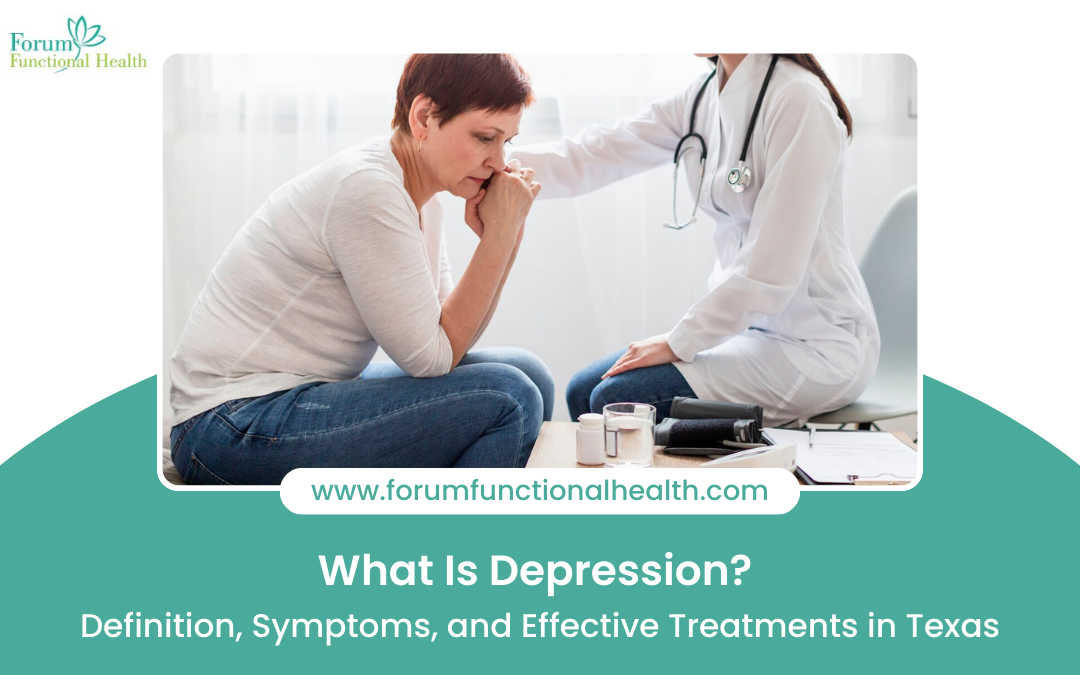Depression Explained: How to Recognize and Treat It in Texas
Depression is a common mental health condition that can affect anyone, regardless of age or background. Despite its prevalence, many people struggle to identify the signs and access appropriate treatment. Understanding the symptoms and knowing where to seek help are crucial steps in managing this condition effectively.
What is Depression?
Depression, also known as major depressive disorder, is a mental health condition characterized by persistent feelings of sadness, hopelessness, and a lack of interest in activities. This condition can impact every aspect of a person’s life, including relationships, work, and physical health.
Common depression symptoms include:
Persistent low mood or sadness
Loss of interest in activities once enjoyed
Changes in appetite or weight
Sleep disturbances (insomnia or oversleeping)
Fatigue or low energy
Difficulty concentrating or making decisions
Feelings of worthlessness or excessive guilt
Thoughts of self-harm or suicide
For women, symptoms of depression in women may also be influenced by hormonal changes, including those associated with pregnancy, menopause, or menstrual cycles.
Recognizing the Signs of Depression
Understanding the signs of depression is the first step in addressing it. Symptoms can vary in intensity and duration but often persist for at least two weeks. If you or someone you know exhibits these symptoms, seeking professional depression help is essential.
Effective Depression Treatments in Texas
Texas offers a wide range of treatment options for individuals battling depression. Whether you’re exploring therapy or holistic approaches, help is readily available.
1. Professional Therapy
Depression therapy is a proven method to help individuals understand and manage their emotions. Cognitive Behavioral Therapy (CBT) is particularly effective in addressing negative thought patterns and developing healthier coping mechanisms.
2. Holistic Treatments
Holistic approaches can complement traditional therapies. These include mindfulness meditation, exercise, and dietary adjustments that promote overall well-being. For a comprehensive approach, consider visiting the Depression Treatment in McKinney, TX for natural and integrative solutions.
3. Medication
For individuals with moderate to severe depression, antidepressants may be prescribed to balance brain chemicals and improve mood. It’s essential to consult a healthcare professional for proper diagnosis and prescription.
4. Functional Health Centers
Functional health centers provide innovative, patient-focused care by addressing the root causes of depression. The Functional Health Center in Texas offers personalized treatment plans that consider physical, mental, and emotional health.
Why Seek Depression Treatment in Texas?
Accessing professional care is vital in managing depression. Texas is home to several reputable centers specializing in depression treatment, offering a mix of traditional and holistic therapies tailored to individual needs.
The Depression Treatment in McKinney, TX stands out for its integrative approach, combining evidence-based practices with natural therapies to help patients achieve lasting relief.
Conclusion
Depression is a challenging but treatable condition. Recognizing the depression symptoms and seeking timely help can make all the difference in reclaiming your mental health. Whether through therapy, holistic approaches, or professional care, the resources available in Texas can support you on your journey to wellness.
Take the first step toward recovery by exploring the services offered at the Functional Health Center in Texas and the Depression Treatment in McKinney, TX. Your mental health matters and help is just a call away. Contact Forum Functional Health Center in Texas.
Read More: What Is Depression? Definition, Symptoms, and Effective Treatments in Texas




Comments
Post a Comment